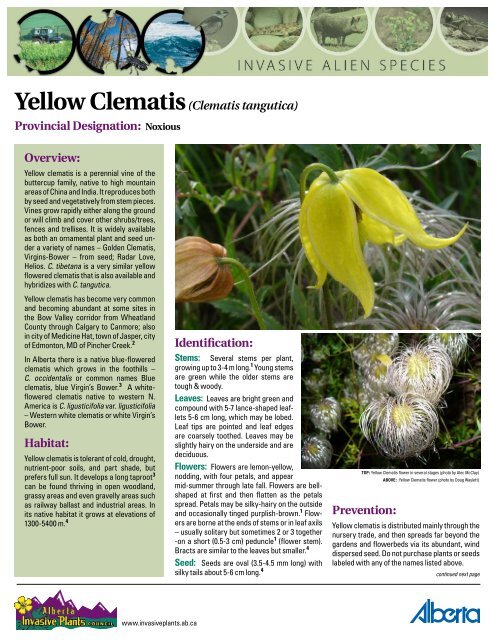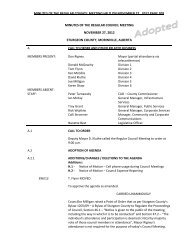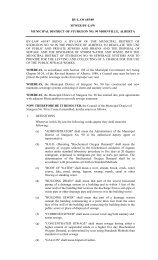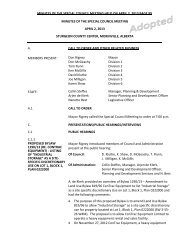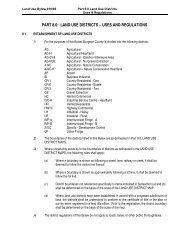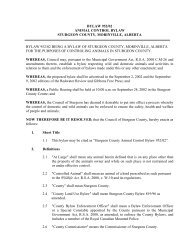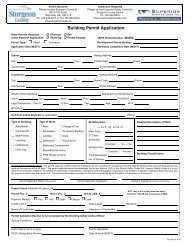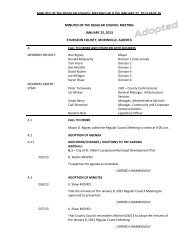Yellow Clematis(Clematis tangutica) - Alberta Invasive Plants Council
Yellow Clematis(Clematis tangutica) - Alberta Invasive Plants Council
Yellow Clematis(Clematis tangutica) - Alberta Invasive Plants Council
- No tags were found...
You also want an ePaper? Increase the reach of your titles
YUMPU automatically turns print PDFs into web optimized ePapers that Google loves.
<strong>Yellow</strong> <strong>Clematis</strong> (<strong>Clematis</strong> <strong>tangutica</strong>)Provincial Designation: NoxiousOverview:<strong>Yellow</strong> clematis is a perennial vine of thebuttercup family, native to high mountainareas of China and India. It reproduces bothby seed and vegetatively from stem pieces.Vines grow rapidly either along the groundor will climb and cover other shrubs/trees,fences and trellises. It is widely availableas both an ornamental plant and seed undera variety of names – Golden <strong>Clematis</strong>,Virgins-Bower – from seed; Radar Love,Helios. C. tibetana is a very similar yellowflowered clematis that is also available andhybridizes with C. <strong>tangutica</strong>.<strong>Yellow</strong> clematis has become very commonand becoming abundant at some sites inthe Bow Valley corridor from WheatlandCounty through Calgary to Canmore; alsoin city of Medicine Hat, town of Jasper, cityof Edmonton, MD of Pincher Creek. 2In <strong>Alberta</strong> there is a native blue-floweredclematis which grows in the foothills –C. occidentalis or common names Blueclematis, blue Virgin’s Bower. 3 A whitefloweredclematis native to western N.America is C. ligusticifolia var. ligusticifolia– Western white clematis or white Virgin’sBower.Habitat:<strong>Yellow</strong> clematis is tolerant of cold, drought,nutrient-poor soils, and part shade, butprefers full sun. It develops a long taproot 3can be found thriving in open woodland,grassy areas and even gravelly areas suchas railway ballast and industrial areas. Inits native habitat it grows at elevations of1300-5400 m. 4Identification:Stems: Several stems per plant,growing up to 3-4 m long. 1 Young stemsare green while the older stems aretough & woody.Leaves: Leaves are bright green andcompound with 5-7 lance-shaped leaflets5-6 cm long, which may be lobed.Leaf tips are pointed and leaf edgesare coarsely toothed. Leaves may beslightly hairy on the underside and aredeciduous.Flowers: Flowers are lemon-yellow,nodding, with four petals, and appearmid-summer through late fall. Flowers are bellshapedat first and then flatten as the petalsspread. Petals may be silky-hairy on the outsideand occasionally tinged purplish-brown. 1 Flowersare borne at the ends of stems or in leaf axils– usually solitary but sometimes 2 or 3 together-on a short (0.5-3 cm) peduncle 1 (flower stem).Bracts are similar to the leaves but smaller. 4Seed: Seeds are oval (3.5-4.5 mm long) withsilky tails about 5-6 cm long. 4TOP: <strong>Yellow</strong> <strong>Clematis</strong> flower in several stages (photo by Alec McClay)ABOVE: <strong>Yellow</strong> <strong>Clematis</strong> flower (photo by Doug Waylett)Prevention:<strong>Yellow</strong> clematis is distributed mainly through thenursery trade, and then spreads far beyond thegardens and flowerbeds via its abundant, winddispersed seed. Do not purchase plants or seedslabeled with any of the names listed above.continued next pagewww.invasiveplants.ab.ca
<strong>Yellow</strong> <strong>Clematis</strong> (continued)Control:Grazing: Not known. <strong>Invasive</strong> plants shouldnever be considered as forage.Cultivation: Not known. Unlikely since stempieces can produce new plants and vines climband out-shade any competing vegetation.Mechanical: Repeated hand pulling prior toseed set can provide effective control and possiblyeradicate small infestations. 3Chemical: 5 Aminopyralid has been used successfullyon flowering plants, newly emergingplants and the re-sprouting shoots of previouslyhand pulled plants, but does not have much effecton the woody stems of older plants. Picloramhas also been effective when used earlyspring or later in the fall. Continue to stress theplant by hand pulling shoots (pers. comm. N.Harder, 2009). Consult your local AgriculturalFieldman or Certified Pesticide Dispenser formore information.Biological: None researched to date.1 Grey-Wilson, C. 1989. <strong>Clematis</strong> orientalis (Ranunculaceae) and its allies.Kew Bulletin 44: 33-60.2 McClay, A. 2007. Risk assessment fact sheet for golden clematis,<strong>Clematis</strong> <strong>tangutica</strong>.3 <strong>Yellow</strong> <strong>Clematis</strong> fact sheet, Non-native Vegetation Control Plan,Jasper National Park.4 Grey-Wilson, C. 2000. <strong>Clematis</strong>, the genus : a comprehensive guide forgardeners, horticulturists, and botanists. Timber Press, Portland,Oregon. 219 pp.5 Always follow the product labels. The use of pesticides in any mannernot published on the label or registered under the Minor Use of Pesticidesregulation constitutes an offence under both the Federal Pest ControlProducts Act and <strong>Alberta</strong>’s Environmental Protection and Enhancement Act.Photos by Alec McClayTOP: <strong>Yellow</strong> <strong>Clematis</strong> infestationABOVE LEFT: <strong>Yellow</strong> <strong>Clematis</strong> leavesABOVE RIGHT: <strong>Yellow</strong> <strong>Clematis</strong> seed headswww.invasiveplants.ab.ca


